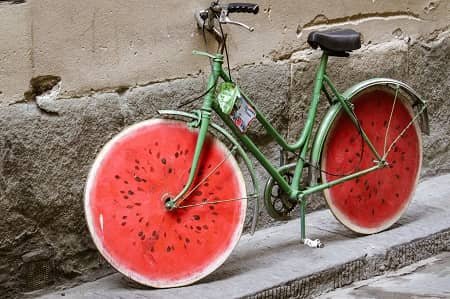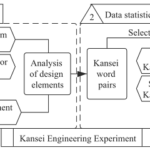
In a world driven by innovation and groundbreaking ideas, creativity is an invaluable asset that enables people to transform their thoughts into tangible realities. Whether you are an aspiring artist, an budding entrepreneur, or simply looking to enhance your problem-solving skills, cultivating creativity will allow you to approach challenges with new perspectives and unlock your full potential.
Creativity is a process that requires intelligence and imagination to produce something new; but most importantly, creative skills can be developed in people of all ages and economic sectors. All individuals, and groups of people, are capable of adopting creative thinking and practicing creativity.
By understanding the creative mindset, mastering essential skills, and adopting a consistent effort, you can unlock the innovator within and harness creativity to drive personal and professional growth.
How can individual and group creativity be developed?
Creativity is not merely a trait reserved for a select few; it is an inherent capacity within each individual, waiting to be nurtured and unleashed. Embark on a journey of self-discovery as we unravel the secrets of creativity, allowing you to transform your ideas into reality.
On the internet, you can find abundant information about activities, techniques, and methods; however, we must develop the criteria to choose the most suitable ones for the group of people we work with and the contexts in which we develop these activities.
Exercises to foster creativity are a great way to discover new ideas and enhance creativity, so you can learn from activities or techniques to expand your skills and those of your team.
In this article, we will provide you with some basic concepts, as well as list some activities and techniques to develop your creativity and that of your team. Additionally, at the end, we present some strategies to promote creative thinking primarily in students.
If you want to delve deeper into the definition of creativity, you can check our publication “What is Creativity?”
Components of Creativity
Let’s start by understanding the components of creativity. In this regard, Lai et al. (2019) organized the components of creativity into two groups: those associated with creative potential and the achieved creative aspects that define creative production.
Table 01. Summary of the components of creativity
| Creative Potential | Intrinsic motivation for creative tasks |
| Knowledge/expertise domain | |
| Unconventional or divergent thinking | |
| Personality traits (e.g., preference for ambiguity, risk acceptance) | |
| Creative Production | Novelty or uniqueness |
| Relevance, usefulness, or appropriateness for some purpose |
If we consider the component of creative potential, we can influence three aspects: knowledge/experience, unconventional thinking, and motivation; however, personality traits remain a pending task.
The importance of the work by Lai et al. (2019) lies in helping us characterize the creative potential of an individual or group, based on motivation, expertise, thinking style, and personality.
Benefits of Developing Creativity
Indeed (2021) describes the following benefits of exercises to develop creativity in companies:
- Improves thinking flexibility: Creativity exercises enhance your mental flexibility. You have the possibility to see small changes that you didn’t notice before.
- Discovery of multidimensional ideas: Creativity exercises help you discover new solutions to repetitive problems.
- Acceptance of work challenges: Work challenges should be seen as an opportunity to showcase and enhance mental creativity rather than a test that delays your progress.
- Seeing new concepts: Some creativity exercises will help you develop your creative vision, allowing you to see objects, ideas, and problems in a new light.
- Enhances teamwork: Creativity exercises help individuals and groups improve teamwork skills, such as communication, problem-solving, and unity.
What Is Individual Creativity?
Individual creativity is the ability of a single person to generate new ideas, make original connections, and produce creative work. It encompasses a wide range of activities, from artistic expression and problem-solving to scientific discovery and technological innovation.
Key Characteristics of Individual Creativity
- Originality: Generating new and unexpected ideas.
- Fluency: Producing a large quantity of ideas.
- Flexibility: Adapting to new ideas and approaches.
- Elaboration: Developing ideas in detail and depth.
- Sensitivity: Perceiving new connections and patterns.
- Imagination: Visualizing possibilities beyond the bounds of reality.
- Risk-taking: Willingness to experiment and challenge assumptions.
- Persistence: Overcoming obstacles and setbacks.
Factors Influencing Individual Creativity
- Personality traits: Open-mindedness, curiosity, and intrinsic motivation are often associated with creativity.
- Cognitive skills: Divergent thinking, problem-solving abilities, and imagination are essential for creativity.
- Knowledge and experience: A deep understanding of a particular domain can provide a rich foundation for creative thinking.
- Environment: A stimulating and supportive environment can foster creativity.
- Habits and practices: Regular engagement in creative activities can enhance creativity.
Benefits of Individual Creativity
- Personal growth: Creativity can lead to self-discovery, personal fulfillment, and a sense of purpose.
- Problem-solving: Creative thinking can help find innovative solutions to challenges and obstacles.
- Innovation: Creativity drives progress in various fields, from science and technology to art and business.
- Communication: Creative expression can improve communication and understanding among people.
- Well-being: Engaging in creative activities can promote mental and emotional well-being.
Techniques for Developing Individual Creativity
Creativity is not solely a product of inspiration; it also requires a set of essential skills that can be honed through practice and dedication. Observation and curiosity form the foundation of creative exploration, encouraging you to actively engage with the world around you and seek new perspectives. Embrace experimentation and risk-taking, venturing beyond your comfort zone to explore uncharted territories and discover novel approaches. Finally, recognize the power of collaboration and feedback, seeking input from others and engaging in open dialogue to refine your ideas and enhance your creative output.
Techniques for developing creativity are primarily oriented towards the individual. In other words, the work you must do to improve your creativity. Here is a list of activities compiled from various sources that can help you develop your creativity:
Incomplete Figure
The incomplete figure test is a drawing exercise. Use a small and simple doodle, such as a semicircle or loop, to create a complete drawing.
If you wish to use this activity in a group, several people can use the same doodle to draw and then compare the drawings.
Seeing how others interpret the same doodle and develop a drawing can help expand creative thinking and provide you with new ideas.
Use Your Less Skilled Profile
The goal is to exercise parts of the brain we don’t frequently use. For example, use your left hand if you’re right-handed, or vice versa.
Change Routes Frequently
Surely you use the same route to and from your home to university, office, or some other place.
Experts recommend using alternative routes to create new associations.
Sports
Go for a run or practice your favorite sport. This helps your mind and strengthens your creativity.
Crafts
Exercise your hands and brain by folding a sheet of paper in half several times, engage in gardening, or do some designs.
Cultivating Your Imagination
Imagination is the fuel that drives creativity, allowing you to visualize possibilities beyond the bounds of reality. To cultivate your imagination:
- Engage in sensory experiences: Immerse yourself in nature, art, music, and other forms of sensory stimulation.
- Practice mindfulness: Cultivate an awareness of the present moment that allows you to observe the world with fresh eyes.
- Daydream: Let your mind wander freely, exploring the realm of the subconscious.
- Seek inspiration from others: Surround yourself with creative people and draw inspiration from their work.
Overcoming Creative Blocks
Creative blocks are a common challenge, but they don’t have to stifle creative flow. To overcome creative blocks:
- Step away from the problem: Take a break from the task at hand and engage in activities that refresh your mind.
- Change your environment: Work in a new environment or spend time in nature to stimulate new ideas.
- Break the problem down: Divide the problem into smaller, more manageable components.
- Seek feedback and collaboration: Share your ideas with others and gather their perspectives.
Observation and Curiosity: The Foundation of Creative Exploration
Sharp observation and a thirst for knowledge are the foundations of creative exploration. To improve your observation skills:
- Pay attention to details: Observe the nuances and subtle patterns of your environment.
- Ask questions: Challenge your assumptions and seek new information.
- Keep a journal: Record your observations, ideas, and reflections.
Experimentation and Risk-Taking: Embracing the Unknown
Creativity thrives on experimentation and a willingness to take risks. To embrace this spirit:
- Step out of your comfort zone: Try new things, explore uncharted territories, and challenge your limitations.
- Accept failure as learning opportunities: Consider setbacks as opportunities to refine your approach and learn from mistakes.
- Don’t be afraid to make mistakes: Mistakes are inevitable and often lead to breakthroughs.
Collaboration and Feedback: The Power of Collective Intelligence
Collaboration and feedback are essential for refining your ideas and expanding your creative horizons. To harness the power of collective intelligence:
- Seek feedback from others: Share your work with trusted individuals and gather their perspectives.
- Participate in brainstorming sessions: Collaborate with others to generate a wide range of ideas.
- Embrace diversity: Surround yourself with people from different backgrounds and perspectives.
What Is Group Creativity?
Group creativity is the collaborative process of generating new ideas or solutions as a team. It harnesses the collective knowledge, skills, and perspectives of a group to achieve a common goal. Unlike individual creativity, which focuses on the ideas and contributions of a single person, group creativity emphasizes the dynamic interaction of ideas and the power of collective intelligence.
Key Characteristics of Group Creativity
- Diversity of thought: A group with diverse perspectives, backgrounds, and experiences can bring a broader range of ideas to the table.
- Open communication: Effective communication among group members is crucial for sharing ideas, providing feedback, and leveraging each other’s contributions.
- Psychological safety: A sense of psychological safety allows group members to express their ideas without fear of judgment or criticism.
- Shared goals and motivation: A clear understanding of the group’s objectives and a shared sense of motivation can drive the creative process.
- Effective leadership: A skilled facilitator or leader can guide the group, manage conflicts, and ensure that everyone’s voice is heard.
Benefits of Group Creativity
- Greater innovation: Groups can generate a wider range of ideas and solutions than individuals working alone.
- Synergy: The combined efforts of group members can lead to innovative ideas that may not have been possible individually.
- Cross-pollination of ideas: Different perspectives and experiences can generate new connections and lead to unexpected insights.
- Shared ownership and commitment: Group members are more likely to accept and implement ideas they have helped develop.
- Improved problem-solving: Groups can approach problems from multiple angles and consider a wider range of solutions.
Factors Influencing Group Creativity
- Group size: The optimal group size for creativity depends on the task and group dynamics.
- Group composition: The diversity of perspectives, skills, and experiences within the group can significantly impact creativity.
- Group norms and culture: Group norms and culture can either foster or hinder creativity.
- Leadership style: The leader’s approach can influence the group’s creativity by promoting open communication, psychological safety, and a focus on innovation.
- External factors: Resources, time constraints, and organizational culture can also influence group creativity.
Techniques for Developing Group Creativity
Different organizations are called to develop creative thinking among their collaborators in order to stay relevant and competitive. In the case of companies, Mehmood et al. (2021) determined that business leadership was positively related to employees’ creativity and found that psychological empowerment and psychological safety mediated the relationships between business leadership and employees’ creativity.
If you’re leading a team and looking for solutions to specific problems, the following techniques for developing creativity will allow you to harness the full potential of your team.
Creative techniques are tools that can be employed by teams to develop concepts and define ideas for implementation.
During teamwork, we must understand that the creative process follows four fundamental steps:
1) Understand the problem
2) Generate ideas
3) Select solutions
4) Activity planning
Now let’s look at the main techniques:
30 Circles
The aim of this activity is for teams to demonstrate their creativity by turning circles into recognizable objects in a very short period of time.
To perform this exercise, you provide a sheet of paper with 30 identical circles. Give the group a maximum of 10 minutes to draw something on as many of the 30 circles as possible.
When working as a team, group members compare the completed circles to see if there are any unifying principles or designs.
Brainstorming
Brainstorming is a group or individual creativity technique. It is the most well-known technique for generating ideas.
It involves spontaneously generating ideas in a group of people on a specific topic.
Brainstorming is used when multiple ideas need to be generated on a topic or problem, when ideas from a team need to be organized, and as support for other creativity techniques.
Forced Connections
In this exercise, ideas are connected with different needs or interests to form a new concept.
This method is based on presenting participants with various items that are unrelated. For example, an eraser and an apple.
Then you ask team members to choose two or more elements and explore different ways to connect them.
Obviously, the exercise will result in a series of far-fetched ideas, but they will help improve creativity in the team.
SCAMPER
The SCAMPER technique is a process that allows for the expansion and improvement of ideas by questioning and testing them from different angles.
- Substitute: What can change about this idea for something else? What would happen if we substitute X for Y?
- Combine: What elements of this idea can be combined for greater efficiency?
- Adapt: What changes should be made to adapt to a different context or market?
- Modify: What could we modify to increase value or functionality?
- Put to other uses: What other uses or applications could it have?
- Eliminate: What could we eliminate to simplify it?
- Reverse: How could we reorganize or adjust it to be more effective?
Six Thinking Hats
“Six Thinking Hats” is a technique used to evaluate the optimization of a product or idea.
Each team member must put on one of the “hats” to discuss some ideas.
Each “hat” represents a unique set of priorities and perspectives that will help focus the discussion.
- White: The white hat represents facts related to the product or idea.
- Yellow: The yellow hat represents possibilities for the product or idea without barriers.
- Black: The black hat addresses challenges or issues with the product or idea considering the opposite viewpoint.
- Red: The red hat represents feelings or perceptions associated with the project or idea.
- Green: The green hat introduces new ideas or possibilities for the idea or product.
- Blue: The blue hat manages the discussion and ensures that the team represents all perspectives.
How to Teach Creative Thinking Skills?
If you are a teacher or responsible for a team of people, you may be interested in learning how to teach creative thinking skills.
As Amabile (1998) indicates, creative thinking refers to how individuals approach problems and solutions; in other words, their ability to gather ideas in new combinations. This skill depends on both personality and individuals’ ways of thinking and working.
According to the OECD, creative thinking is the form of thinking that leads to the generation of valuable and original ideas.
Creative thinking requires a compilation of analytical, problem-solving, organizational, and communication skills to evaluate and solve a problem.
Finally, we leave you with this document “Creativity Dynamics” from Educrea Capacitación, where you can find a series of dynamics that you can practice with your students, team, as the case may be, and we also offer you a series of recommendations for developing creative thinking.
Conclusion
The benefits of creativity extend far beyond the realm of artistic expression, permeating various aspects of personal and professional life. By cultivating your creative potential, you can enhance your problem-solving skills, enabling you to tackle challenges with innovative solutions and overcome obstacles with ingenuity. Foster innovation in the workplace by driving change, generating new ideas, and propelling your career forward. Finally, cultivate personal fulfillment by expressing yourself through creative endeavors, enriching your life with meaning and joy.
Creativity is not a fixed trait; it is a dynamic force that can be nurtured and amplified through conscious effort and dedication. Embrace the multifaceted nature of creativity, master essential skills, and harness the power of practice to unleash the innovator within you and turn your ideas into reality. Embark on a journey of self-discovery, innovation, and personal growth, empowering yourself to become a catalyst for change and a driving force of creativity in the world around you.
References
Amabile T. 1998. How to Kill Creativity. Harvard Business Review.
Indeed. 2021. 18 Creativity Exercises To Improve Creative Thinking and Problem-Solving at Work
Lai, E., J. Yarbro, K. DiCerbo, E. de Geest. 2019. Skills for Today: What We Know about Teaching and Assessing Creativity. Pearson. 33 p.
Mansfield D. 2019. Creative ideation for digital marketers: from theory to practice: from theory to practice. Builtvisible.
Mehmood, M.S., Jian, Z., Akram, U. and Tariq, A. (2021), “Entrepreneurial leadership: the key to develop creativity in organizations“, Leadership & Organization Development Journal, Vol. 42 No. 3, pp. 434-452. https://doi.org/10.1108/LODJ-01-2020-0008





